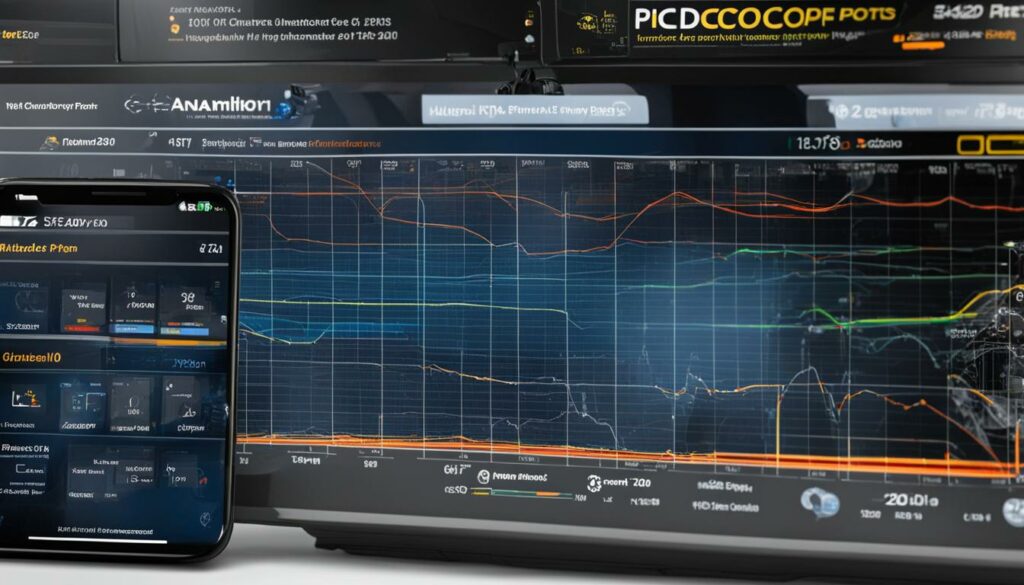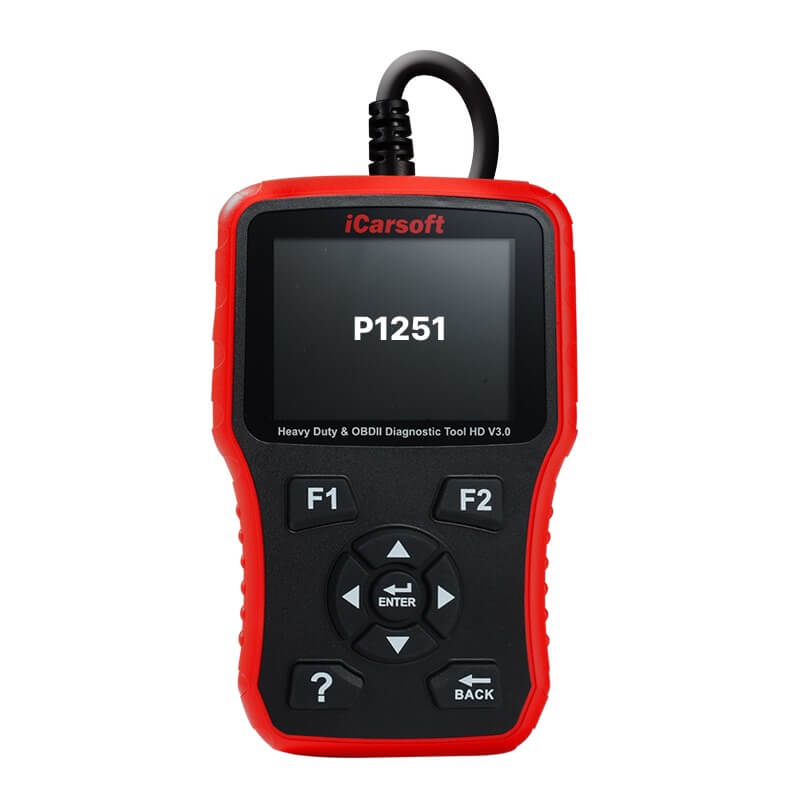P1251 – Turbocharger Wastegate Solenoid A Range/Performance
POSTED IN pcodes
If you’re experiencing reduced power or unusual turbo behavior in your vehicle and have received the P1251 fault code for Turbocharger Wastegate Solenoid A Range/Performance, professional assistance may not always be readily available. However, we offer an alternative solution – the permanent removal of this specific fault code. By uploading your Engine Control Unit (ECU) file to our portal, we can help resolve the issue.
Key Takeaways:
- P1251 fault code indicates Turbocharger Wastegate Solenoid A Range/Performance issue.
- Professional assistance may not always be available to resolve the code.
- We offer the permanent removal of the P1251 fault code by uploading your ECU file.
- Resolve reduced power and unusual turbo behavior in your vehicle.
- Experience improved performance and reliability.
Common Causes and Symptoms of P1251 Code
The P1251 fault code often indicates problems with the turbocharger wastegate solenoid, which can affect the performance of the turbocharger. Several common causes may trigger this fault code:
- Damage or clogging of the vanes or assembly
- Issues with vacuum lines or control valves
- Incorrect positioning of the vanes by the electric actuator
- Intermittent sticking of the actuator
These causes can disrupt the proper functioning of the wastegate solenoid, leading to the P1251 code. Recognizing the symptoms associated with this fault code is crucial for prompt diagnosis and resolution. Symptoms may include:
- Over-boost detection triggering the Engine Control Unit (ECU) to put the vehicle into limp mode
- Whistling noises
- Loss of power due to breached gaskets or hose clamps
It is important to address these symptoms promptly and investigate the common causes to restore optimal performance to the turbocharger wastegate solenoid.
Troubleshooting Steps for P1251 Code
To diagnose and resolve the P1251 fault code, follow these troubleshooting steps:
Buy tested tuning file for Adblue / EGR / DPF / Adblue off now!
- Check the voltage being sent to the pressure sensor to ensure it is correct.
- Inspect the operation of the Turbocharger Electric Actuator Stepper Motor across its full range of movement.
- Perform a stepper motor check with the actuator arm both attached and detached from the vane-actuating lever.
- Examine the range of movement of the vanes inside the turbine housing.
- Verify the correct operation of the boost solenoid and inspect for any split or leaking vacuum hoses.
- If none of the above problems are present, consider replacing the Electric Actuator Stepper Motor or pneumatic actuator.
- Once the troubleshooting steps are completed and any necessary repairs or replacements have been made, clear the ECU fault code.
- Retest the system to confirm that the problem is resolved.
By following these troubleshooting steps, you can effectively diagnose and address the P1251 fault code in your vehicle.

Troubleshooting Steps for P1251 Code
| Step | Action |
|---|---|
| 1 | Check voltage sent to the pressure sensor |
| 2 | Inspect Turbocharger Electric Actuator Stepper Motor |
| 3 | Perform stepper motor check with and without actuator arm |
| 4 | Examine range of movement of vanes |
| 5 | Verify operation of boost solenoid and inspect vacuum hoses |
| 6 | Consider replacing Electric Actuator Stepper Motor or pneumatic actuator |
| 7 | Clear ECU fault code |
| 8 | Retest system for problem resolution |
Following these troubleshooting steps will help you identify and resolve the P1251 fault code in your vehicle. It is important to address the underlying issues and clear the fault code to ensure optimal performance and reliability.
P1251 Code in Toyota Turbochargers
The P1251 fault code is particularly common in Toyota turbochargers. It is usually thrown by the Engine Control Unit (ECU) in response to over-boosting in the turbocharger. This specific fault code tends to occur during periods of less engine stress, when over-boost spikes would not be expected.
Possible causes of the P1251 fault code in Toyota turbochargers include:
- Over-boosting due to performance modifications
- Faulty Turbocharger Electric Actuator Stepper Motor
- Seized vanes or Variable Nozzle Turbine (VNT) assembly inside the turbine housing
To accurately diagnose and resolve the P1251 fault code in Toyota turbochargers, it is essential to address these potential causes. By identifying the underlying issues and implementing appropriate solutions, you can ensure optimal performance and reliability of your Toyota vehicle.
Quote:
“The P1251 fault code in Toyota turbochargers can be a common occurrence during unexpected over-boosting moments. Resolving this issue requires identifying potential causes such as performance modifications, faulty electric actuators, or seized vanes.” – Automotive Expert
Importance of Using PicoScope for Diagnosis
While a diagnostic scan tool is essential, using PicoScope alongside it can significantly enhance the diagnostic journey. PicoScope provides physical before and after test results, allowing for a more comprehensive diagnosis and protecting all parties involved.
By monitoring live data and analyzing events as they happen, PicoScope offers irrefutable evidence for presenting to the customer and warranty companies. It ensures a successful and reliable diagnosis, leading to a first-time fix and increased workshop efficiency.
PicoScope is a powerful diagnostic tool that enables technicians to assess the performance of various vehicle systems and identify underlying issues that may not be detected by the Engine Control Unit (ECU) alone.

With PicoScope, you can:
- Analyze sensor data in real-time to pinpoint the exact cause of a problem.
- Visually observe waveforms and voltage patterns for accurate troubleshooting.
- Compare data before and after repairs to ensure successful fixes.
- Save and share diagnostic reports for documentation purposes.
PicoScope’s advanced features and user-friendly interface make it an indispensable tool for technicians seeking reliable and efficient diagnostics.
“PicoScope has revolutionized the way we diagnose vehicle issues in our workshop. The ability to visualize sensor data and analyze waveforms in real-time has greatly improved our diagnostic accuracy and saved us valuable time.” – John Smith, Automotive Technician
With increased workshop efficiency, accurate diagnostic results, and the ability to provide concrete evidence to customers and warranty companies, using PicoScope can elevate your diagnostic capabilities to new heights.
Understanding Diagnostic Trouble Codes (DTCs)
Diagnostic Trouble Codes (DTCs) play a vital role in the diagnosis of vehicle issues. When a sensor detects a reading outside the normal range, it triggers the storage of DTCs in the vehicle’s on-board computer diagnostic system. These codes serve as important indicators, guiding technicians in identifying faults and determining which systems or components need further analysis.
By properly interpreting DTCs, technicians can embark on a comprehensive diagnostic journey. Combined with the vehicle’s service manual, DTCs enable accurate fault diagnosis and resolution, ensuring the prompt and effective restoration of the vehicle’s performance and reliability.
“DTCs provide valuable guidance for technicians, leading them on a systematic diagnostic journey to identify and resolve faults in a vehicle.”
Benefits of DTCs in Diagnostic Journey
When working with DTCs, technicians gain several advantages in the diagnostic process:
- Efficiency: DTCs streamline the diagnostic journey by pinpointing specific areas of concern, reducing guesswork and unnecessary testing.
- Accuracy: By focusing on the fault codes, technicians can direct their efforts toward the systems or components flagged as problematic, increasing the chances of an accurate diagnosis.
- Speed: DTCs expedite the identification of faults, enabling technicians to diagnose and resolve issues more quickly, minimizing vehicle downtime.
- Consistency: DTCs ensure a standardized approach to diagnostic procedures, enabling technicians to follow a specific path and methodology to address the identified faults.
By unlocking the information held within DTCs, technicians can efficiently navigate the diagnostic journey, delivering reliable and effective solutions to the underlying issues.
| Advantages of DTCs | |
|---|---|
| Efficiency | DTCs reduce guesswork and unnecessary testing, streamlining the diagnostic process. |
| Accuracy | Technicians can focus on the flagged systems or components, increasing the chances of an accurate diagnosis. |
| Speed | DTCs expedite fault identification, enabling technicians to diagnose and resolve issues more quickly. |
| Consistency | DTCs ensure a standardized approach to diagnostic procedures, leading to consistent results. |
Conclusion
In conclusion, the P1251 fault code for Turbocharger Wastegate Solenoid A Range/Performance can have a significant impact on the performance and function of a vehicle’s turbocharger system. If professional assistance is not readily available, there is an alternative solution to permanently remove this fault code. By uploading the Engine Control Unit (ECU) file to our portal, we can help resolve the issue and restore the vehicle’s power and turbo functionality.
It is crucial to have a good understanding of the common causes and symptoms associated with the P1251 code. This knowledge can assist in diagnosing and troubleshooting the issue effectively. By following the appropriate troubleshooting steps, such as checking the voltage, inspecting the actuator, and verifying the operation of the boost solenoid, the underlying problems can be identified and resolved.
Furthermore, using tools like PicoScope alongside a diagnostic scan tool can greatly enhance the diagnostic journey. PicoScope provides detailed physical test results, allowing for a more comprehensive diagnosis and improved efficiency. By monitoring live data and analyzing events as they occur, PicoScope provides valuable evidence for both customers and warranty companies, leading to a successful diagnosis and increased workshop productivity.
By addressing the underlying issues and resolving the P1251 fault code, the vehicle’s performance and reliability can be restored. Whether through professional assistance or the permanent removal of the fault code, it is essential to take action to ensure optimal turbocharger system functionality and a smooth driving experience.
FAQ
What is the meaning of the P1251 fault code for Turbocharger Wastegate Solenoid A Range/Performance?
The P1251 fault code indicates a range or performance issue with the turbocharger wastegate solenoid in your vehicle’s engine.
What are some common causes and symptoms of the P1251 code?
Common causes of the P1251 code include damaged or clogged vanes or assembly, issues with vacuum lines or control valves, incorrect positioning of vanes by the electric actuator, and intermittent sticking of the actuator. Symptoms may include reduced power, unusual turbo behavior, over-boost detection triggering limp mode, whistling noises, or loss of power due to breached gaskets or hose clamps.
What are the troubleshooting steps for resolving the P1251 fault code?
Start by checking the voltage sent to the pressure sensor and the operation of the Turbocharger Electric Actuator Stepper Motor. Perform a stepper motor check with the actuator arm attached and detached from the vane-actuating lever. Check the range of movement of the vanes inside the turbine housing and inspect the boost solenoid and vacuum hoses for any issues. If necessary, replace the Electric Actuator Stepper Motor or pneumatic actuator and clear the fault code for retesting.
Is the P1251 fault code specific to Toyota turbochargers?
Yes, the P1251 fault code is particularly common in Toyota turbochargers. It is usually triggered by over-boosting in the turbocharger and can occur during times of less engine stress.
How can using PicoScope enhance the diagnostic journey for resolving the P1251 code?
PicoScope is a diagnostic scan tool that provides physical before and after test results, allowing for a more comprehensive diagnosis. It helps identify issues that may not be detected by the ECU alone by monitoring live data and analyzing events as they happen. This evidence can be used to present to the customer and warranty companies, ensuring a successful diagnosis and resolution.
What are Diagnostic Trouble Codes (DTCs) and their role in the diagnostic journey?
Diagnostic Trouble Codes (DTCs) are codes stored by a vehicle’s on-board computer diagnostic system. They are triggered when a sensor reports a reading outside the normal range, indicating a problem in the car. DTCs guide technicians in identifying faults and determining which systems or components need to be tested for a thorough diagnosis.


